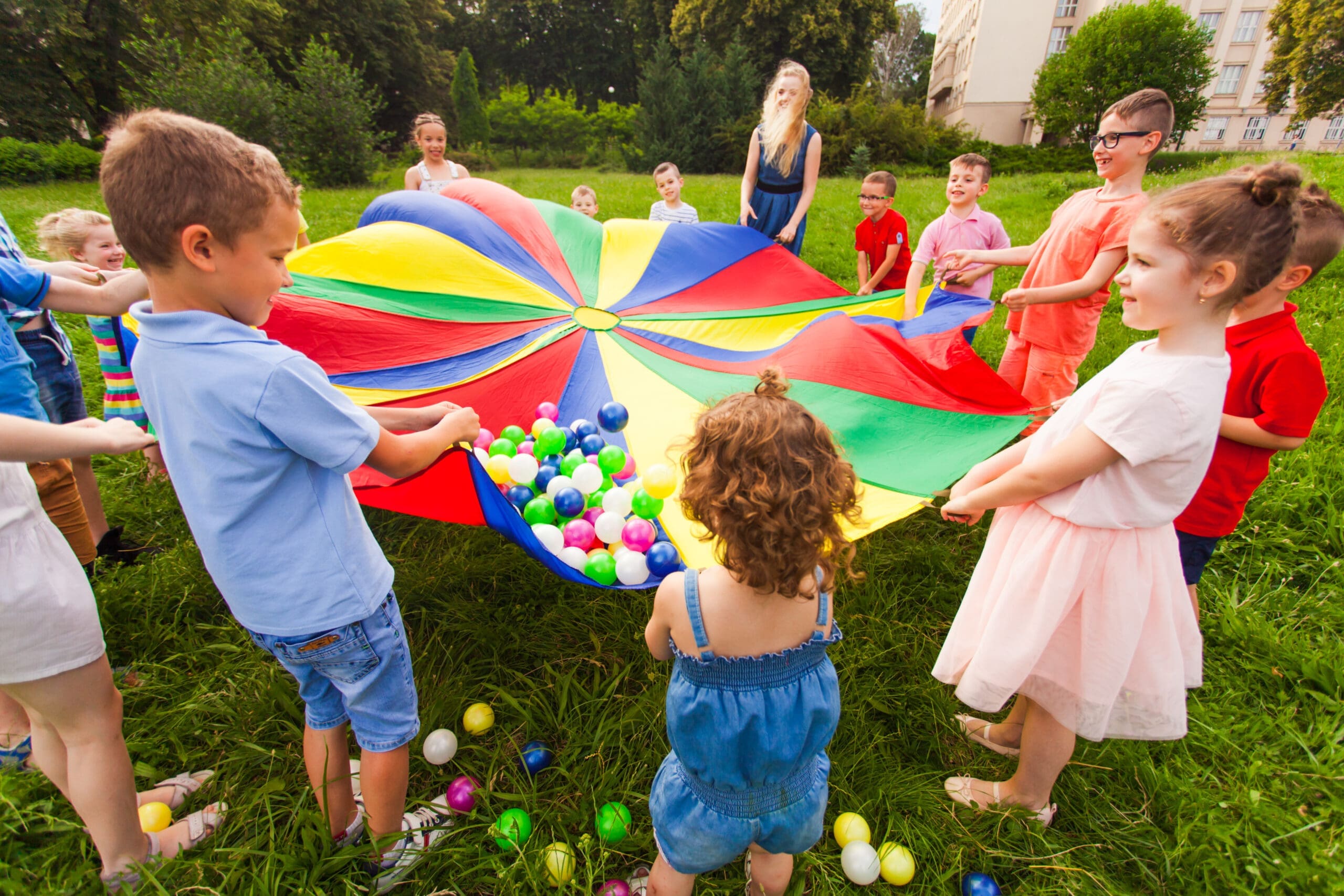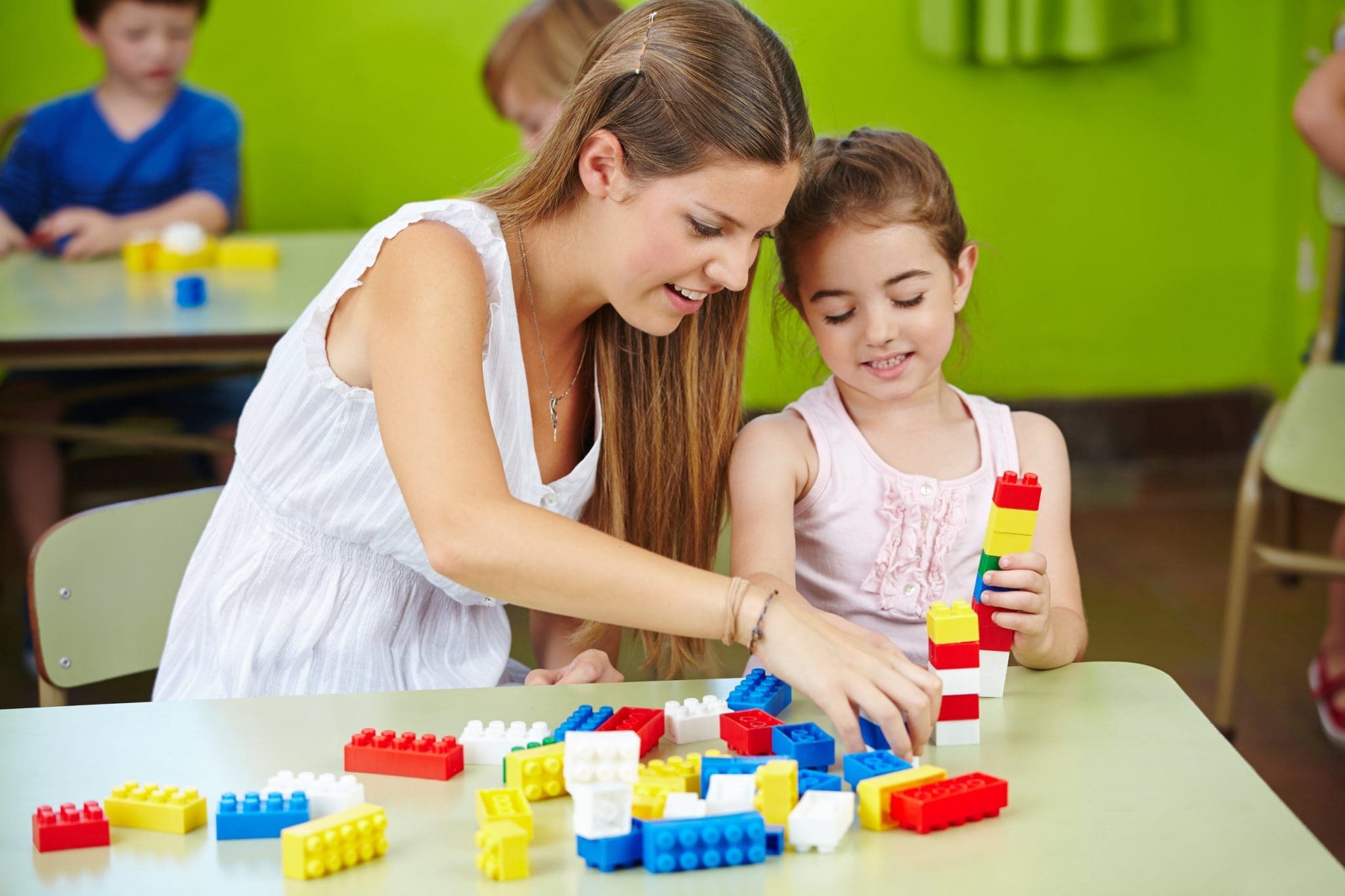In this post
Children are naturally playful and dedicate their lives to having fun! But play is about so much more than just having fun: it is how children learn and is a vital aspect of their early years development. Play can help your children to develop vital skills
Here’s everything you need to know about the different types of play in early years:
What is Play in Early Years?
The definition of play is a physical or mental activity that we do for fun, without any other purpose in mind. Anyone can play, but play is particularly important for young children, as those children are not only enjoying themselves but simultaneously learning vital life and social skills. When children are in nursery, pre-school, or early years foundation stage childcare settings, play dominates their curriculum. At the early years stage, play can either be a very social activity or it is something that children can engage in alone. Play is often divided into two sectors: physically active play, which includes activities such as running around, playing tag, or joining in team sports. Or mentally active play, which includes activities like colouring, building with blocks or playing pretend with a doll.
Often, we have specific ideas about what play is; children play with toys, with dolls, with balls. In reality, the concept of play is much wider-reaching than this. Any activity where a child is doing something that they find interesting and enjoyable can often be categorised as a type of play. For example, when a child is observing play, they are still engaging in their own more passive type of play. Children engage in many types of play in the early years, with the many experts suggesting that there are at least 11 different forms of play.
How Does Play Influence Child Development?
There are many different ways that play can influence child development. When children are playing, they are learning new things and improving their cognitive, physical, social, and emotional well-being. In short, when children are learning they are developing. They are learning about the world, about themselves, and about their place in the world around them. Other ways that play can influence child development includes how children are developing the life skills that they need throughout their school career and further forward into the world of work. Play will also help children to understand how to forge friendships and relationships.
Other positive ways in which play can influence child development include the development of key life skills such as:
- Confidence in themselves and their abilities
- Increased levels of self-esteem
- More resilience in the face of challenges, or when things don’t work out the way they expect
- The ability to develop their interaction skills, interacting with both children and adults
- Improving their social skills: these will usually improve as children become older
- Increased independence and ability to make their own decisions
- A growing curiosity about the world around them
- The ability to cope with challenging situations in an age-appropriate way
As children grow and develop, the ways in which they play will develop too. But play should always be a part of childhood in some form or another: most children will go on to find the type of play that they relate to best, and will often continue this type of play into adulthood.

Positives of Play to Learning
Play is incredibly important at every age, but particularly during the early years of child development. Play is important because it can help children to develop a wide range of skills and abilities, exposing them to new situations. Children use play to grow and develop without even realising they are doing it, whilst having fun independently, and with their peers, at the same time.
The Early Years Foundation Stage (EYFS) statutory framework outlines the standards that school and childcare providers must meet for the learning, development and care of children from birth to the age of five. According to the EYFS framework, which determines the way children are taught during the early years stage of their education, play is one of the three characteristics of effective learning. These three characteristics are:
- Finding out and exploring
- Using what they know in their play
- Being willing to have a go
Whilst only one of these characteristics specifically mentions play, all three of these are play related. Children should be encouraged to play, and be willing to try something new and engage in new types of play, whilst exploring the world around them. Breaking play down in this way gives clear guidelines to all practitioners as they are guiding their little ones. In their early years, play is the best way to encourage children to learn effectively, and most children don’t even realise that they’re learning at all.
There are 11 different types of play that children can engage in. These are:
Unoccupied Play
Unoccupied play is one of the primary stages of play and is the way in which infants will play between birth and around three months old. Although the title of this behaviour is unoccupied play, in reality, this doesn’t look like play at all. Instead, you should be looking for the infant to make movements that don’t seem to have an objective as they are observing the environment around them. This is what unoccupied play looks like, and it is integral to a child’s development as it gives them the first building block to progress into more meaningful play and exploration.
Independent Play
As the name suggests, independent play develops when your child begins to play alone. Allowing a child to develop independent play skills is important because it teaches them to be self-sufficient. Independent play can begin from as early as 3 months (when a child can hold a rattle or reach for a toy) but is most common between the ages of two and three. Children should have a variety of toys suitable for independent play available to them. Some children will continue with independent play beyond three years old, preferring to play independently rather than with playmates.
Onlooker Play
Onlooker play is common at around the same age and stage as independent play. In this play type, children will take a step back and observe either the play between other children or the activities of adults and the way they engage with each other. Whilst onlooker play may look passive, its importance shouldn’t be underestimated. This is a great way for children to learn the rules of games or human interactions and will allow children to gain the confidence they need to engage in play. Mimicking the play of others also forms a part of onlooker play, as it will give the child the opportunity they need to build their own skills.
Parallel Play
Parallel play is very similar to onlooker play and is a type of play that develops at around two years of age. Parallel play is a type of play in which two or more children will play alongside each other, but without interacting with each other. They will play with their own toys and in their own worlds, with neither child influencing the play of the other. Although they may not influence each other and don’t appear to be engaging with each other, children engaged in parallel play are still learning from each other, and may then go on to mimic the behaviour they see from their playmates. Like the other stages we have already discussed, engaging in parallel play is a bridge to additional types of play that will develop at a later stage.
Associative Play
Moving into later stages of play, children will tend to engage in associative play when they reach the age of three or four and will remain in this stage until around the age of five years old. This is the first stage of play in which children will build friendships and relationships with each other. Children still play independently in associative play, but they communicate with each other as they are doing so. At this stage, they will learn to take turns, solve problems, and develop language through communication. This stage of play is great for socialisation and is important for learning the building blocks of creating friendships with other children.

Cooperative Play
When all the previous stages come together, and children are able to play together this new stage is known as cooperative play. You will typically see cooperative play develop between the ages of four and five years old, but some childcare workers will also see this in younger children who have older siblings or strong relationships with other children who are slightly older in age. Cooperative play is important because it hones key social skills, and it is at this time that play can really expand and develop. Children can enjoy small-world imaginative play, board games and puzzles, or outdoor activities as part of a group. But it’s important to remember that play is not linear, and just because your child engages in cooperative play doesn’t mean they won’t return to earlier play stages too.
Competitive Play
Once your child has reached the stage where they are able to play cooperatively with other children, they will then have the play skills they need to engage in other types of play that are often driven by their interests and personality type. One of these play types is competitive play, which can help to contribute to the development of social, thinking, and physical skills. Some examples of competitive play include board games, competitive sports such as football or netball, or even playing computer games against their friends or peers. Competitive play teaches vital skills such as rules, turn-taking, winning and losing, and being part of a team.
Constructive Play
The definition of constructive play is fairly self-explanatory: this is the type of play that involves construction! Typical toys that a child will use when engaging in constructive play are building blocks, Lego bricks, or magnetic tiles. Children will often then bring additional toys into their constructive play, combining toy trains with the track they have built, for example, or adding figures to Lego houses. Constructive play is important because it provides children with the opportunity to develop their problem-solving skills: how does something work? How can I make this work? Why won’t my tower stand upright and what will fix it? These are all important questions and answering them requires perseverance, meaning that constructive play teaches children the importance of not giving up and trying again.
Dramatic Play
When you see your child dressing up in a fairy princess costume or taking your orders at their make-believe restaurant, they are engaging in dramatic play. This is sometimes also referred to as fantasy play. In this type of play, children are developing both their imaginations and their language skills. They are taking something they have experienced in the real world and are then developing their understanding of this situation by repeating it, and the language involved in it, on their own terms. So if you take a child to the ice cream parlour, often they will choose to come home to play ice cream parlours, in order to cement what they have learned and to understand the role they should play in this situation. Dramatic play also builds skills in turn-taking and cooperation.
Physical Play
Physical play is incredibly important for building and developing gross and fine motor skills, and many of these skills are skills that you will keep and use for life. For this reason, it is important to encourage all children to engage in physical play. Examples of physical play include throwing or kicking a ball, riding a bike or scooter, or utilising common playground equipment such as climbing frames. There are many examples of team sports that would fall under the category of physical play, and these will also develop social and cooperation skills, encouraging children to work with others. There are lifelong learning benefits to these skills, and to engaging in a healthy physical lifestyle.
Symbolic Play
Finally, the last type of play commonly listed in the 11 play types that children develop is symbolic play. In symbolic play, children learn to express themselves by using the skills that they most enjoy. They will learn to express and process their ideas, experiences and emotions. Examples of symbolic play include using vocal activities such as telling jokes or singing, or activities involving fine motor skills such as drawing, colouring, or creating sculptures with clay or play dough.



